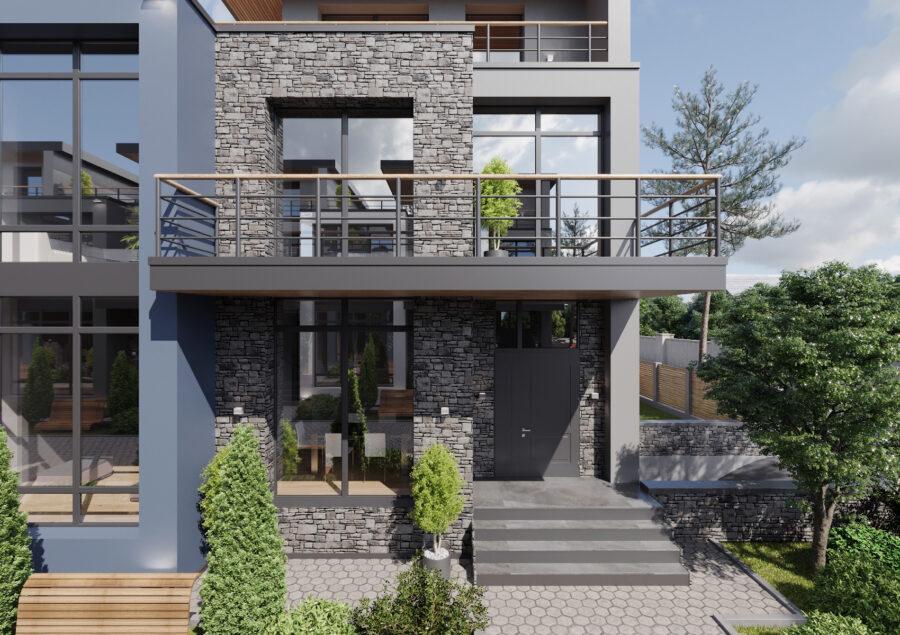Creating a countryside home is a complex process that requires a careful approach to selecting professionals, especially architects. The success of the project, as well as the comfort and longevity of your future home, depend directly on choosing the right architectural services. The architecture of a countryside home should not only meet the needs of the owners but also harmonize with the surrounding environment, ensure energy efficiency, and have aesthetic appeal. Here, we’ll cover essential tips and recommendations to help you choose the right architectural services for building a countryside home.
1. Define Your Goals and Project Requirements
Before starting your search for an architect, it’s important to define the goals and requirements of your project. Consider these questions:
- What style should the house be? (modern, classic, Scandinavian, minimalist, etc.)
- Are there specific features of the site to consider? (terrain, water bodies, neighboring structures)
- How many floors and rooms are planned?
- Will eco-friendly or energy-saving technologies be used?
- What budget is allocated for construction?
A clear understanding of these goals will help you better outline your requirements for the architect and simplify the selection process for the right professional.
2. Review Architectural Portfolios
One of the first steps in selecting architectural services is to examine the portfolios of architects and firms. Reviewing completed projects gives you insight into the architect’s style, experience in designing countryside homes, and ability to adapt to clients’ needs.
Pay special attention to:
- Similar Projects — If the architect has experience designing countryside homes similar to yours, it can be a valuable advantage.
- Experience with Similar Site Conditions — For example, if your site has challenging terrain, choose an architect with experience in such conditions.
- Quality of Visualizations and Drawings — This reflects professionalism and the architect’s dedication to providing a comfortable design process for the client.
3. Research Client Feedback and Recommendations
Client feedback is one of the most reliable sources of information about an architect’s quality of service. Seek recommendations from friends or colleagues who have recently completed countryside construction projects, or look for reviews online.
Look for feedback on:
- Timely Completion — Adhering to deadlines is essential for any construction project.
- Quality and Reliability — A well-executed project ensures durability and stability.
- Responsiveness to Client Needs — Architectural services should be tailored to the client’s specific requests.
4. Professional Qualifications and Experience
Architects specializing in countryside homes should have specific knowledge and experience. A professional background and relevant education are essential indicators of proficiency. Important qualifications may include:
- Membership in Professional Associations
- Degrees, Certifications, and Awards in Architecture
- Recognition from Clients and the Professional Community
Experienced architects bring a deeper understanding of construction nuances and can offer innovative and proven solutions for your home.
5. Ensure the Firm Offers Comprehensive Services
When selecting an architectural firm, confirm that it offers a full range of services, from concept development to construction assistance. A comprehensive approach eliminates the need to involve multiple contractors, reducing the time required for project completion.
A full range of architectural services might include:
- Concept Development and Preliminary Design
- Detailed Drawings and Working Documentation
- Selection of Construction and Finishing Materials
- Construction Supervision — Ensuring that construction meets design requirements.
- Consultations and Assistance in Selecting Building Contractors
6. Determine Whether the Architect Provides Construction Supervision
Construction supervision involves the architect’s oversight of the project throughout the construction stages. This service helps prevent errors during implementation and ensures adherence to architectural decisions. The architect monitors construction quality, material use, and resolves issues on-site.
Advantages of Construction Supervision:
- Strict Project Adherence — No deviation from the initial design.
- Guaranteed Quality and Precision — Ensures work is carried out accurately.
- Quick Response to Changes or Challenges — Allows for real-time adjustments as needed.
7. Consider Eco-Friendly and Energy-Saving Technologies
Eco-architecture is increasingly popular among countryside homeowners. If you are interested in energy efficiency and reducing environmental impact, discuss green technology options with your architect. Many architects offer passive house solutions, such as:
- Energy-Efficient Windows and Insulation Systems
- Solar Panels
- Eco-Friendly Materials
- Rainwater Collection and Waste Recycling Systems
These solutions can reduce operational costs and decrease the home’s environmental footprint.
8. Pay Attention to Transparent Pricing
Pricing is one of the most important factors when choosing architectural services. Architects may charge a fixed rate for the project or bill hourly. It’s essential to clarify all terms in advance and know what services are included in the cost. Detailed pricing discussions and a preliminary budget estimate will help prevent unexpected expenses during construction.
9. Schedule a Personal Meeting with the Architect
A personal meeting is your opportunity to assess how well the architect understands your project and how willing they are to work within your preferences. At the first meeting, discuss key points:
- Your Ideas and Style Preferences
- Site Features and Potential Limitations
- Project Budget and Timeline
During the conversation, pay attention to the architect’s willingness to ask questions, offer solutions, and explain the features of their proposals. A good professional will answer your questions in detail and incorporate your wishes into the design of your countryside home.
10. Look for Local Experience
Architects with local experience have a better understanding of the area’s climate, soil, and building regulations. They can propose better-adapted solutions for your home. Local specialists also have experience working with contractors and suppliers in your area, which is an additional advantage.
Examples of Successful Solutions for Countryside Homes
Architectural projects for countryside homes can vary significantly based on the client’s wishes, site features, and budget. Examples of current trends in countryside homes include:
- Homes with Panoramic Windows and Open Terraces — Maximize integration with nature and create a sense of openness.
- Passive Houses — Structures designed to make optimal use of natural energy sources.
- Homes Using Natural Materials — Such as wood and stone, which are both eco-friendly and aesthetically pleasing.
- Energy-Saving Homes with Smart Technologies — Minimize electricity costs and enhance resident comfort.
Conclusion
Choosing architectural services for building a countryside home is a crucial step that requires careful analysis and thoughtful decision-making. Understanding your goals and requirements, reviewing portfolios, and considering the architect’s experience and qualifications will help you select a specialist who can provide the best solutions for your future home. Countryside home architecture should combine aesthetics, functionality, and durability, ensuring a comfortable living experience for years to come.




